On the south-west edge of the Pacific Rim of Fire sits an archipelago of shaky isles. These isolated islands are the result of aeons of collisions, erosion, submergence, and fiery upheaval. One of the last settled parts of the world, New Zealand (Aotearoa) is seen as a link with the past, a different evolutionary path, a lost world.
The concept of visiting an ancient world, frozen in time, was developed by Arthur Conan Doyle in The Lost World (1912). In this book he told the tale of an expedition that discovers an area where ancient creatures (mostly from the time of the dinosaurs) survived through to the present.
When humans arrived in New Zealand they found frogs, the leiopelmatids, from the most ancient living frog lineage; a group of reptiles, the tuatara, that had been around for over 200 million years before going extinct everywhere else; giant birds, the ratites, from the most ancient group of living birds. And so much more. Typically for most groups, over 95% of species were endemic, only found in New Zealand. Truly a lost world.
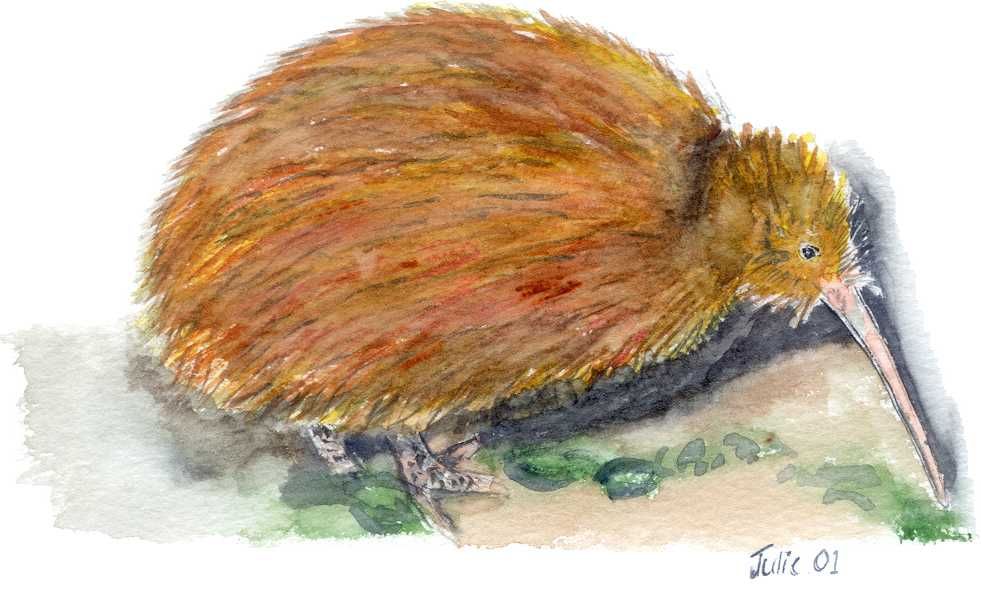
New Zealand has certainly become a lost world in popular culture. When you need a location that suggests another world, or an older world, New Zealand has been the place to go. On screen, New Zealand has stood in for Narnia, Terebithia, Ancient Greece, Heaven. Of course, the most obvious land is from the world of Tolkien. Through six movies, The Lord of the Rings and The Hobbit, to the upcoming TV series, New Zealand is Middle-Earth. To Tolkien, Middle-Earth was always a version of our Earth, perhaps long ago, or in some alternate universe. New Zealand nicely fills the role of the lost, or other, world.
The sinking land
The biology and geology of New Zealand mirrors the concept of the lost world. The geological origins of Aotearoa lie in Gondwana, a southern supercontinent that contained many of the world’s continents in one enormous land mass. Gondwana formed around 500 million years ago (mya) and began a long break up into our modern continents around 185 mya. The separation would take another 120 million years to complete.
New Zealand formed as part of a subcontinent on the eastern coast of Gondwanaland adjacent to what would become Antarctica and Australia. The subcontinent was much larger than New Zealand is today and was called Zealandia (Te Riu a Maui). By about 85 mya Zealandia had separated from Gondwanaland and the Tasman Sea was forming. By around 65 mya the oceanic gap had grown to 1500 km and has remained about the same since that time. This titanic break-up has left its imprints on the biology of the modern world (Box 1).
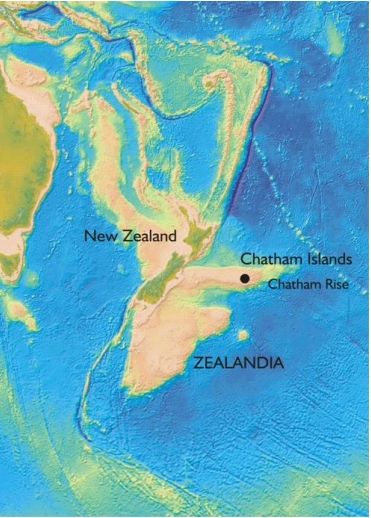
Zealandia truly became a lost world at this point. Here was a large landmass isolated by a significant ocean for over 60 million years. Plenty of time and space for evolutionary experiments to run in a manner different to the rest of the world.
One aspect that is common with lost continents is that, at some point, they sink into the ocean, like legendary Mu or Lemuria. Zealandia was no different. For the next 40 million years, Zealandia did a slow motion Atlantis by sinking under the Pacific Ocean. By the late Oligocene, around 25 mya, most of Zealandia had succumbed to the waves. This phase is rather (un)romantically labelled the "Oligocene Drowning". We are not sure how much of Zealandia survived through this period (Box 1). There have been some suggestions that all of Zealandia was submerged. However, the presence of old Gondwanan lineages, like the Leiopelmatid frogs, suggests that at least a little of Zealandia survived through the "Drowning" to become part of New Zealand. Regardless, a large proportion of species were likely lost from Zealandia at this point. The majority of species lineages present in New Zealand today are those that found their way across the oceans to successfully colonise the lost world after it re-emerged from the sea.
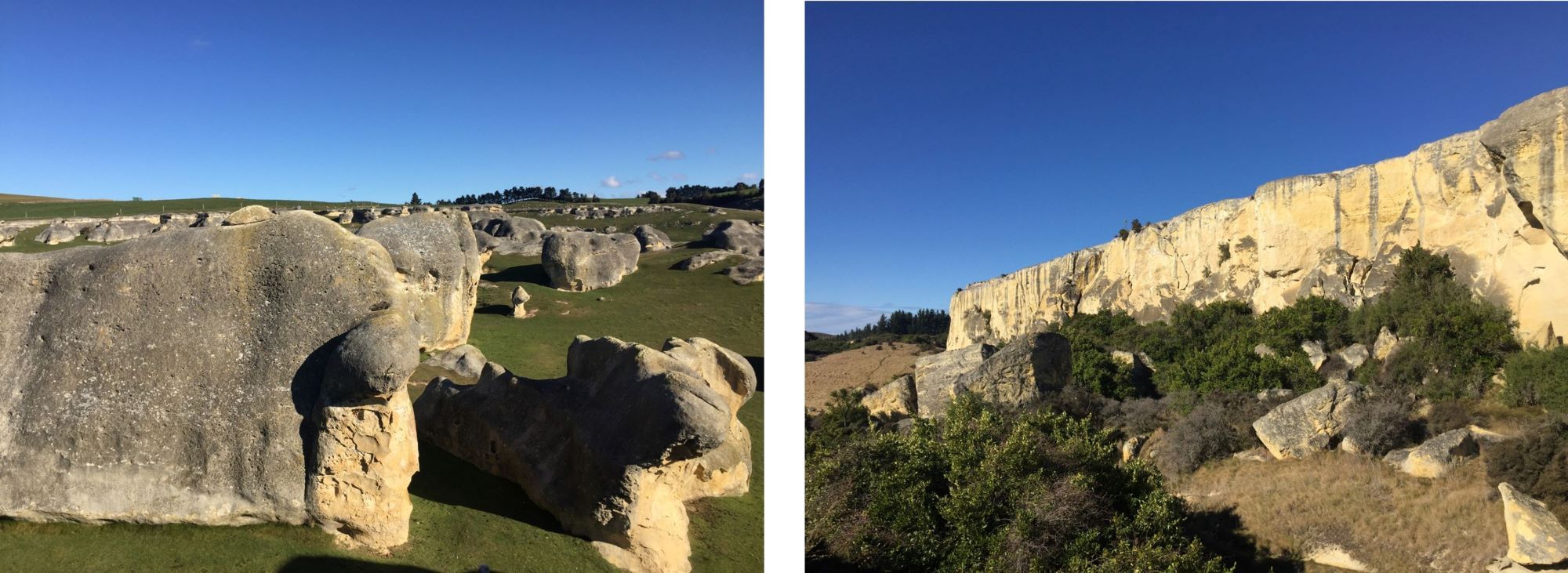
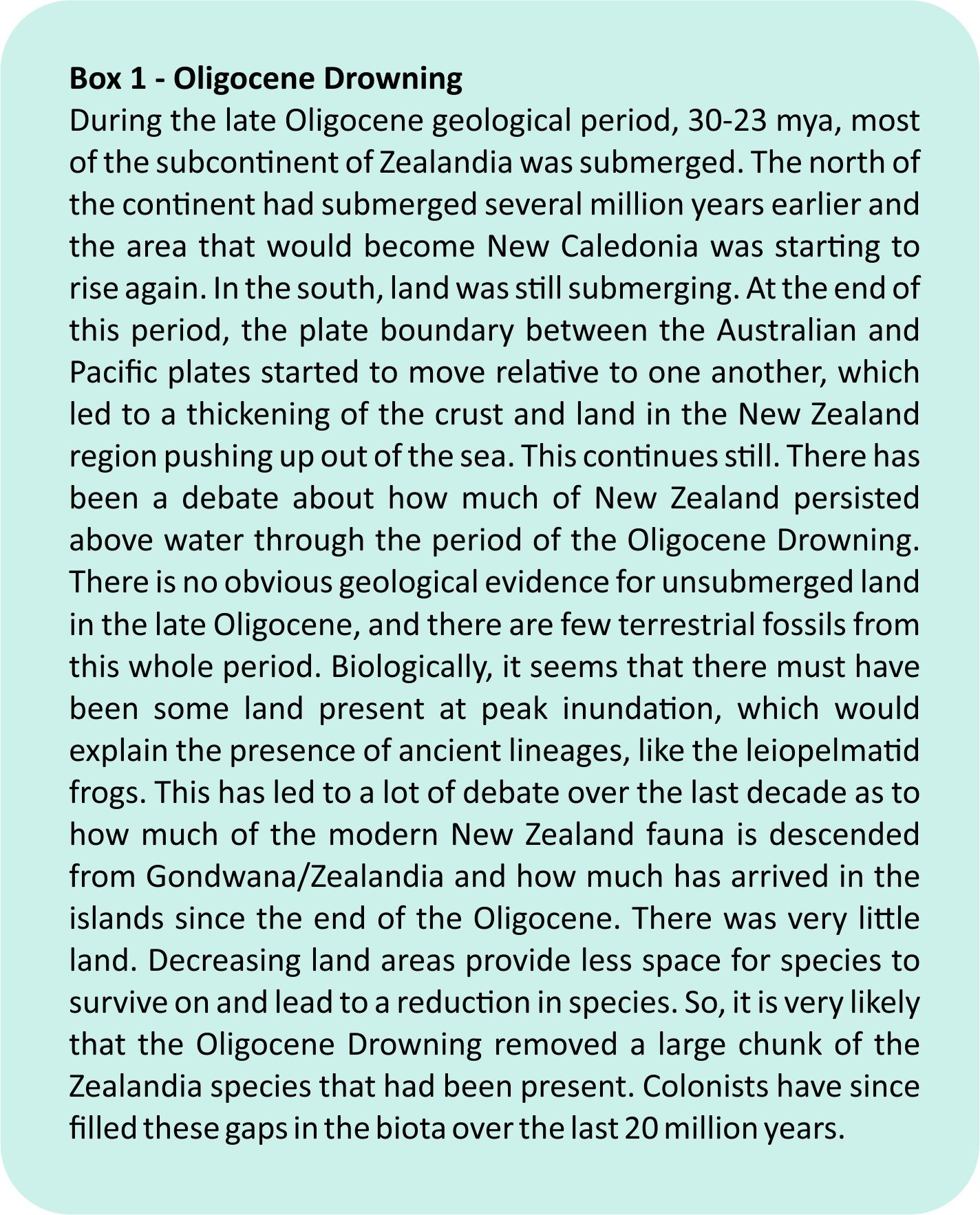
Around 25 mya years ago the Australian and Pacific plate boundaries started to move, colliding into one another. The net result was a thickening of the Earth’s crust which reversed the long submersion and led to New Zealand rising from the ocean, like H.P. Lovecraft’s lost southern Pacific land of Rl’yeh. This continental collision caused parts of young New Zealand to slide past one another, north or south depending whether they were on the Australian or Pacific sides of the boundary. More importantly, the collision produced the mountainous area of the Southern Alps (Middle-Earth’s Misty Mountains). The active plate boundary also provided for many active volcanoes in the area (our own Mount Dooms).
Increasing mountain regions not only provided more land area and different types of habitats overall, but it also resulted in more water becoming available with a flow on effect for ecosystems. The mountains also became the source of glaciation as New Zealand went through the recent ice ages. Today, about 93% of Zealandia is still submerged; the emergent parts include New Zealand, New Caledonia, and New Zealand’s offshore Chatham and Subantarctic Islands.
The final phase of New Zealand’s story is one of the lost world finally found. Polynesians discovered and colonised the islands in the 14th century. Europeans began their colonisations in the late 18th century. Both waves of humans had profound effects on ecosystems and the species living in New Zealand. New species were brought into New Zealand, native species were lost through hunting, habitat fragmentation and competition, and the landscapes were often modified beyond recognition, especially through fire.
The land of giants
One feature of a lost world is that they have giants. Middle-Earth has its giant spiders and eagles. Skull Island has its giant gorilla and insects. New Zealand does not disappoint. Gigantism applies to many groups. Moa, distant cousins of emu and ostriches, were some of the largest birds that we know. The largest eagle that ever lived, the Haast eagle, flew over the Southern Alps (could there be a more Middle-Earth image?). The weta insect group, imagine crickets on steroids, are larger and heavier than mice, land snails are as large as your hand. Recent fossils show that there were giant swans, penguins (as large as humans), and pigeons.
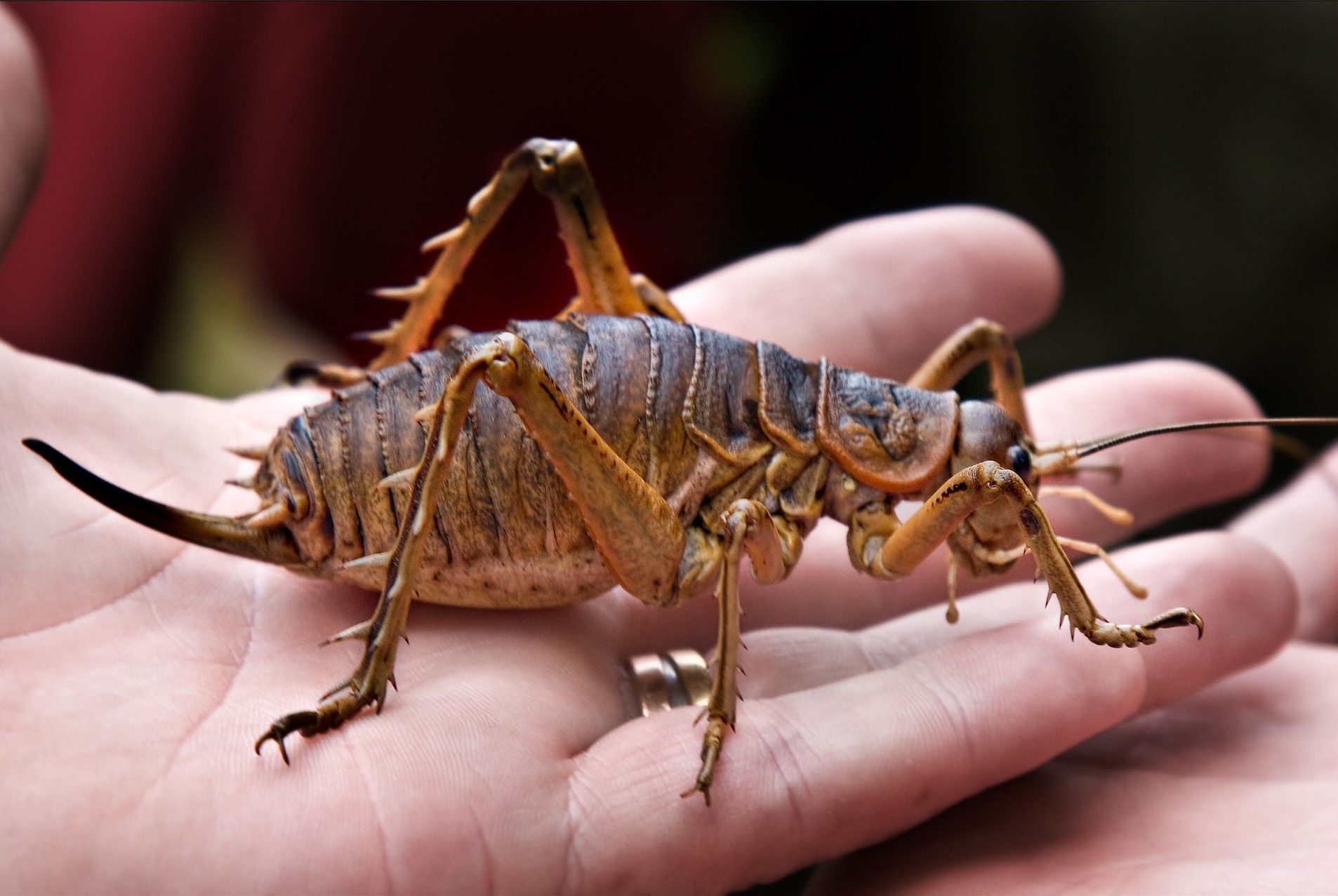
New Zealand’s long and complicated geological history has created a common narrative about its biology. There are several observations often made about New Zealand and its natural history. First, New Zealand is distantly isolated from other landmasses. There is no doubt that the vast oceanic distances surrounding New Zealand are a formidable barrier to species attempting to colonise the islands. Second, the biota is unique. New Zealand is often thought of as a land of birds, as bird species play different roles in ecosystems unlike other parts of the world. For example, moa species played the role of browsers and grazers typically filled by mammals elsewhere. Third, there is a high level of endemicity (species only found in NZ). Typically, endemism reaches in excess of 90% for most groups. Almost all of the native species found in New Zealand are products of the lost world. Fourth, there are many behaviourally or morphologically strange and distinctive species; divaricating plants, strange reptiles, giant birds. Fifth, the composition of the native New Zealand biota is disharmonic, some groups are over-represented, such as seabirds, flies and moths, while others are not found in modern New Zealand at all, such as snakes and mammals. Despite the large number of marsupial mammals in Australia which, given their ancient history, were presumably present in Zealandia when it broke away from the Australian portion of Gondwana, they are not found in New Zealand. Marsupials can live in all sorts of habitats and landscapes, and yet there are only three wild marsupial species, the possum and two wallabies, in New Zealand (and they were introduced by humans). Where did the old endemic mammals go? Perhaps most did not make it through the "Drowning" as they were constrained to smaller and smaller island areas. Perhaps they could not sustain the competition from birds that increasingly shared their niches. Only new fossil evidence is likely to provide us with an answer.
These observations are interpreted as the result of a long isolated continental island biota. But is this accurate? First, physical isolation is not the same as biological isolation. Oceanic islands isolated from a mainland all eventually end up with relatively large biotas regardless of the oceanic barrier surrounding them. Second, New Zealand does have a unique biota but all distinct areas are, in fact, unique. That is what makes them distinct! Third, endemicity is usually high on islands, especially oceanic islands, like Hawaii. Once a species is isolated on any island, it diverges from its ancestors. Fourth, distinctive taxa are common products of evolution on islands, think the dodo and Galapagos finches. In fact, there is an idea, called the island rule, which predicts that species will become larger or smaller on islands relative to their mainland relatives, depending on their starting size. Fifth, disharmonic biotas are best explained by random colonisation and extinction events. It is somewhat unpredictable about which species will successfully colonise over an ocean gap. Any isolated islands will have a fauna created by those species that happened to make it there.
Is New Zealand really that different to other islands? Probably, only in scale. New Zealand has a large area, about the same size as the United Kingdom or Japan, and it has been lost for much longer than virtually any other island group on the planet. This has allowed time for evolution and isolation to do their work more extensively than in most other islands. The isolation has resulted in higher endemicity, more giants, and more obvious disharmony and uniqueness in the biota.
The land of the lost
A lost world is usually teaming with ancient life. It is ancient in the sense that species are found in the land that no longer exist elsewhere. Typically, this is in the form of dinosaurs. The lost world works of Arthur Conan Doyle, Edgar Rice Burroughs and Jules Verne are full of pterodactyls, T-rex, plesiosaurs and the like. New Zealand does have reptiles from the time of the dinosaurs (tuatara). Given that birds are the last living remnants of the dinosaurs, and that the New Zealand of the last tens of millions of years is the most bird dominated land on Earth, then it really was a lost world teeming with dinosaurs.
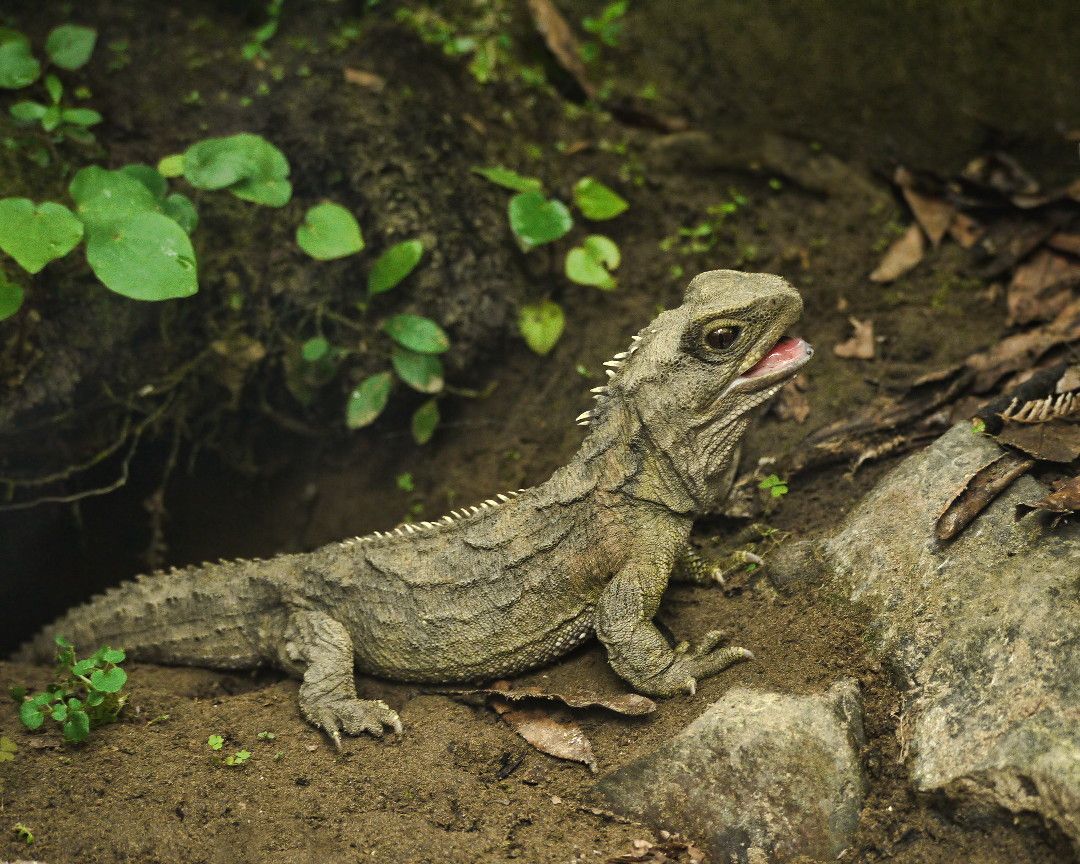
There are traces of the ancient landmass of Gondwanaland in New Zealand species. In addition to tuatara, leiopelmatid frogs, moa, weta (Orthoptera), velvet worms (Onychophora), southern beech trees (Nothofagus), kauri trees (Agathis australis) and other New Zealand species are often referred to as Gondwanan taxa (Box 2) as their ancestors were found there prior to Zealandia breaking away. Many of these lineages are better thought of as Zealandian, as their ancestors arrived during the 50 million years in which the sub-continent of Zealandia was above the waves, including moa and weta, but after it had split from Gondwanaland.
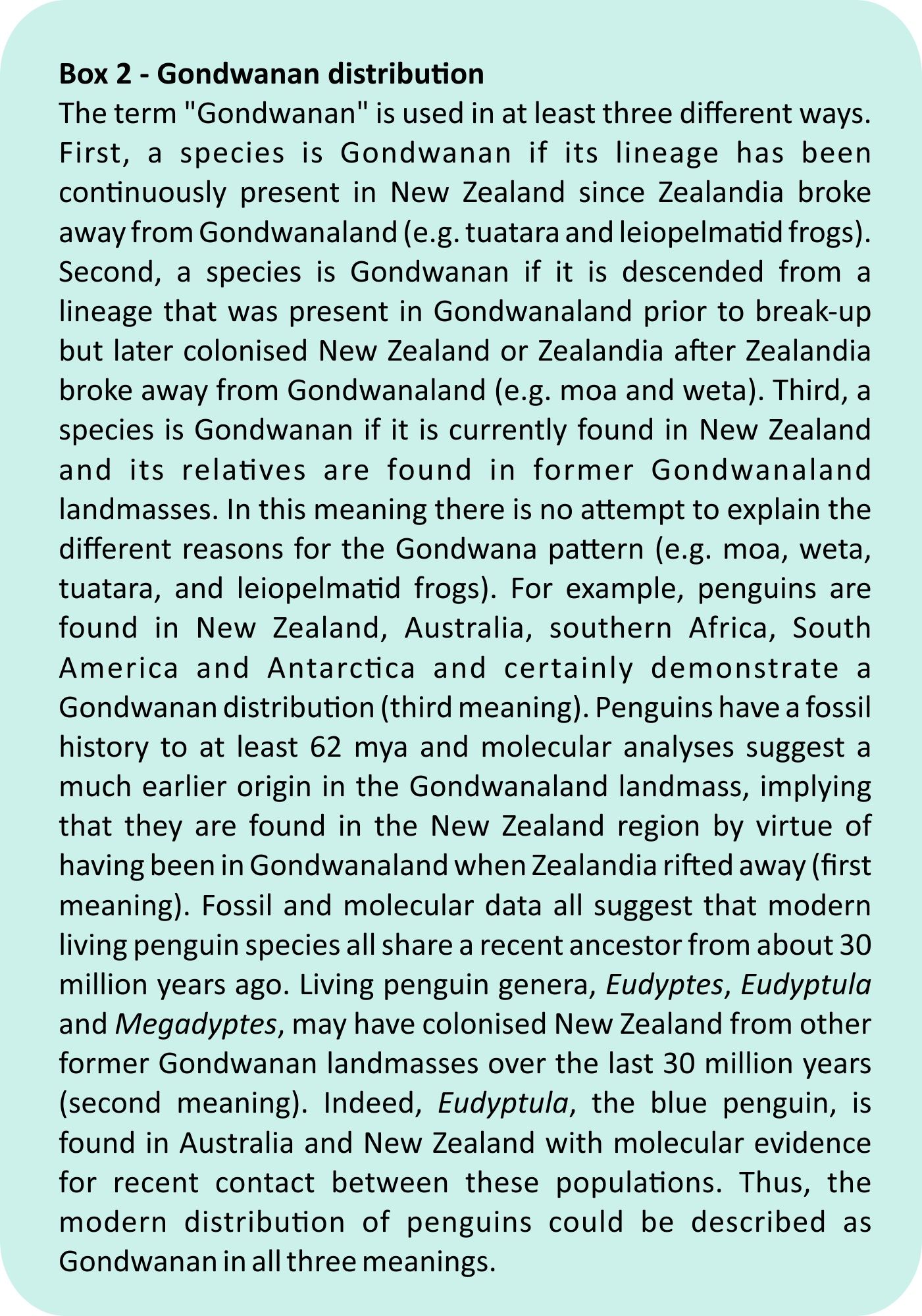
The majority of species lineages appear to have colonized New Zealand in the last 20 million years, i.e. after the drowning period. We can use DNA and the molecular clock approach (Box 3) to obtain this information. The vast majority of these species have ancestors in Australia. These species colonised after the Oligocene Drowning as New Zealand was emerging from the ocean. Five to 20 million years is still a very long time for isolated populations to evolve, more than enough to generate high endemicity and strange forms. For example, one of the smallest eagle species in the world, the Australian little eagle, evolved into the enormous Haast eagle. They did so in less than a million years.
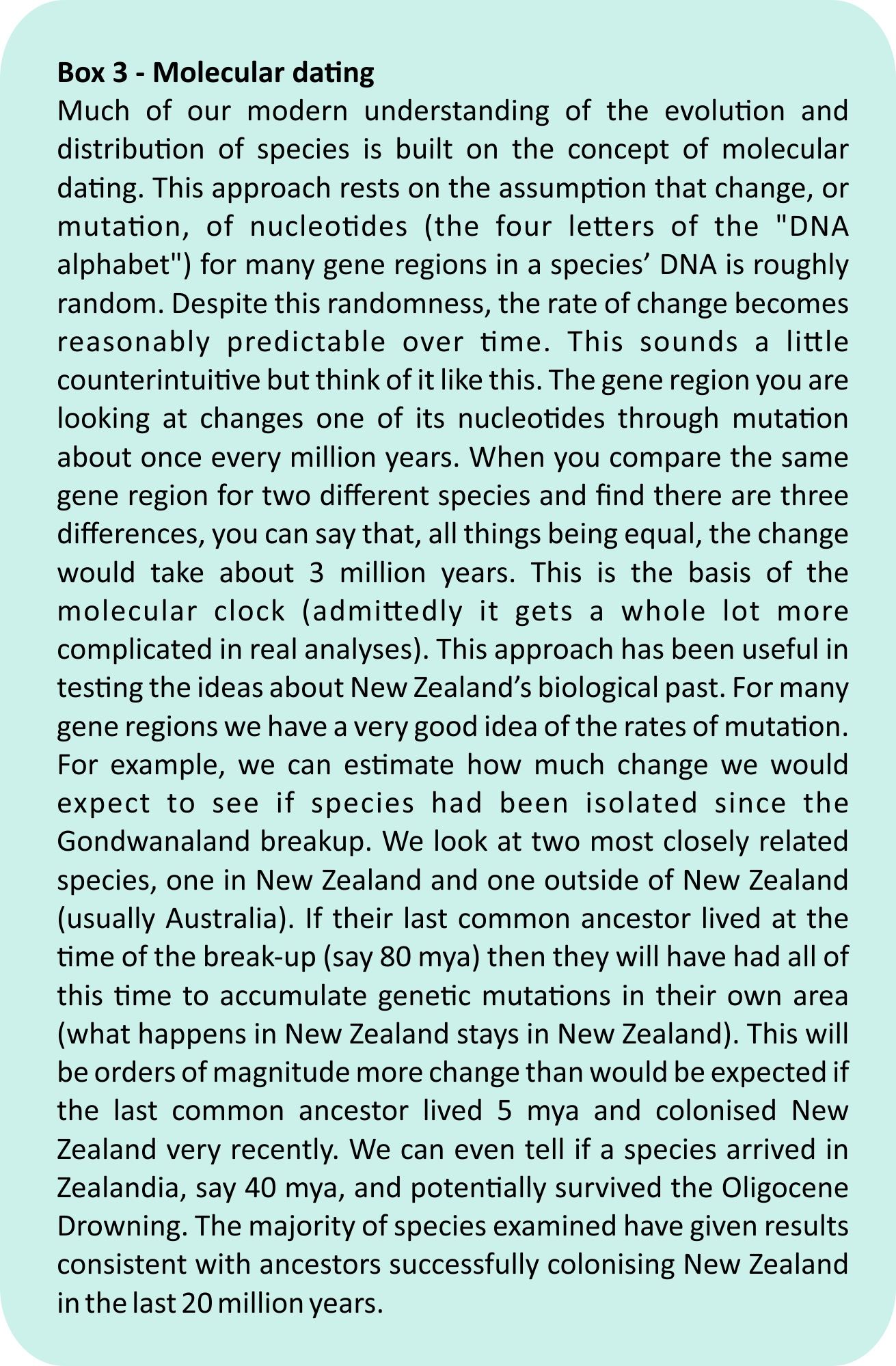
There is another sense in which New Zealand can be seen as a land of the lost. Since human colonisation, a huge proportion of endemic species have gone extinct. A large proportion of native vertebrates have been lost, including over 50 bird species. Spectacular species, such as the huia, where males and females had very different sized beaks, all of the seven large moa species, the Haast eagle, the bulky New Zealand swan, tiny wren species, all failed to survive the human onslaught. Extinction in New Zealand’s species is often attributed to the long isolation of the biota and a set of organisms different to the rest of the world. The lack of native terrestrial mammals has been seen as a telling point suggesting the endemic species were unable to cope with introduced mammal predators. While this certainly played a role (and continues to be important), many of the usual suspects, such as habitat modification and fragmentation, introduction of competitors, and the arrival of diseases, played just as strong a role in New Zealand’s recent extinctions.
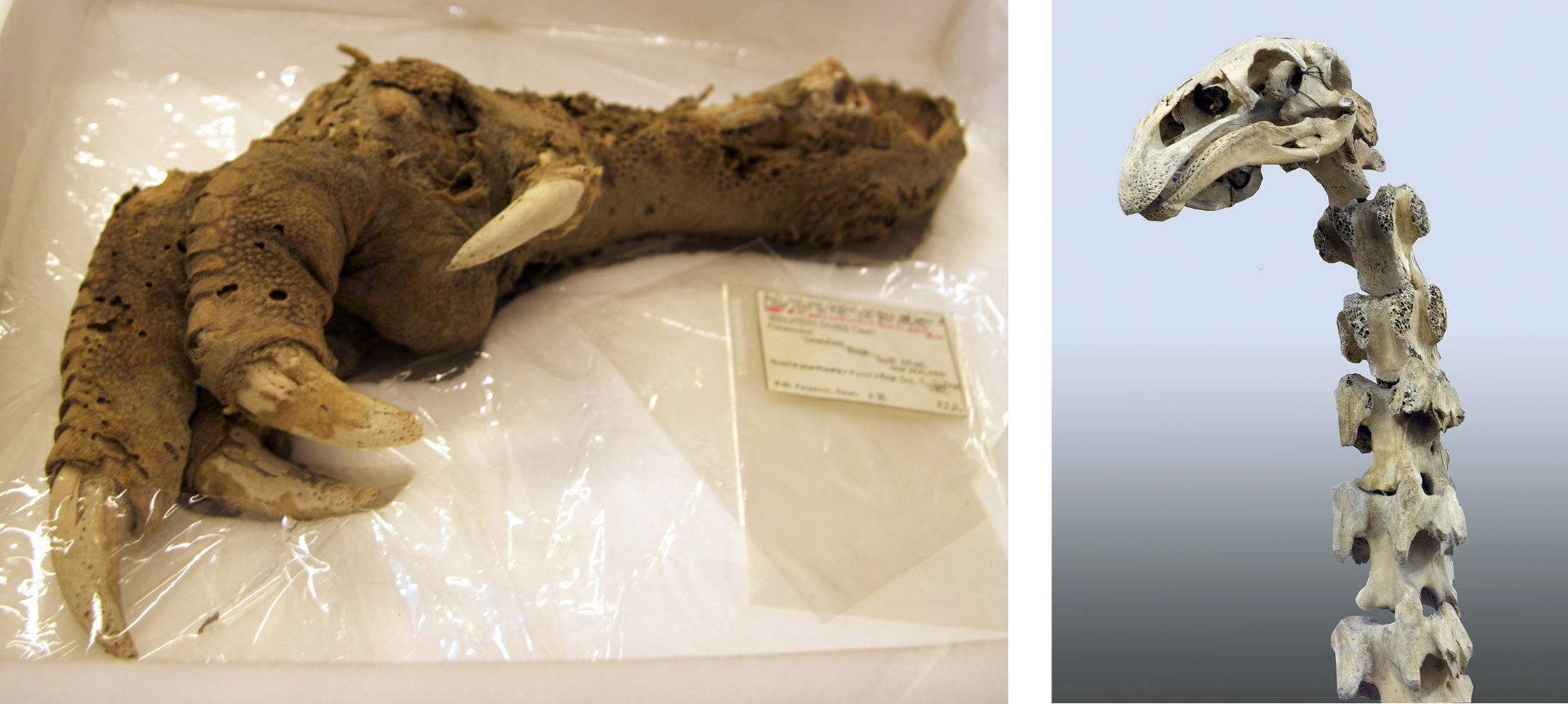
Extinctions have played a role throughout the history of New Zealand. We are still discovering evidence for these missing species (Box 4). Superb fossil faunas in central Otago from around 16-20 mya show many organisms that were lost long before humans arrived. Crocodiles, parrots, lizards are found in these lake deposits. Most intriguingly, there is also a mammal fossil from this time .
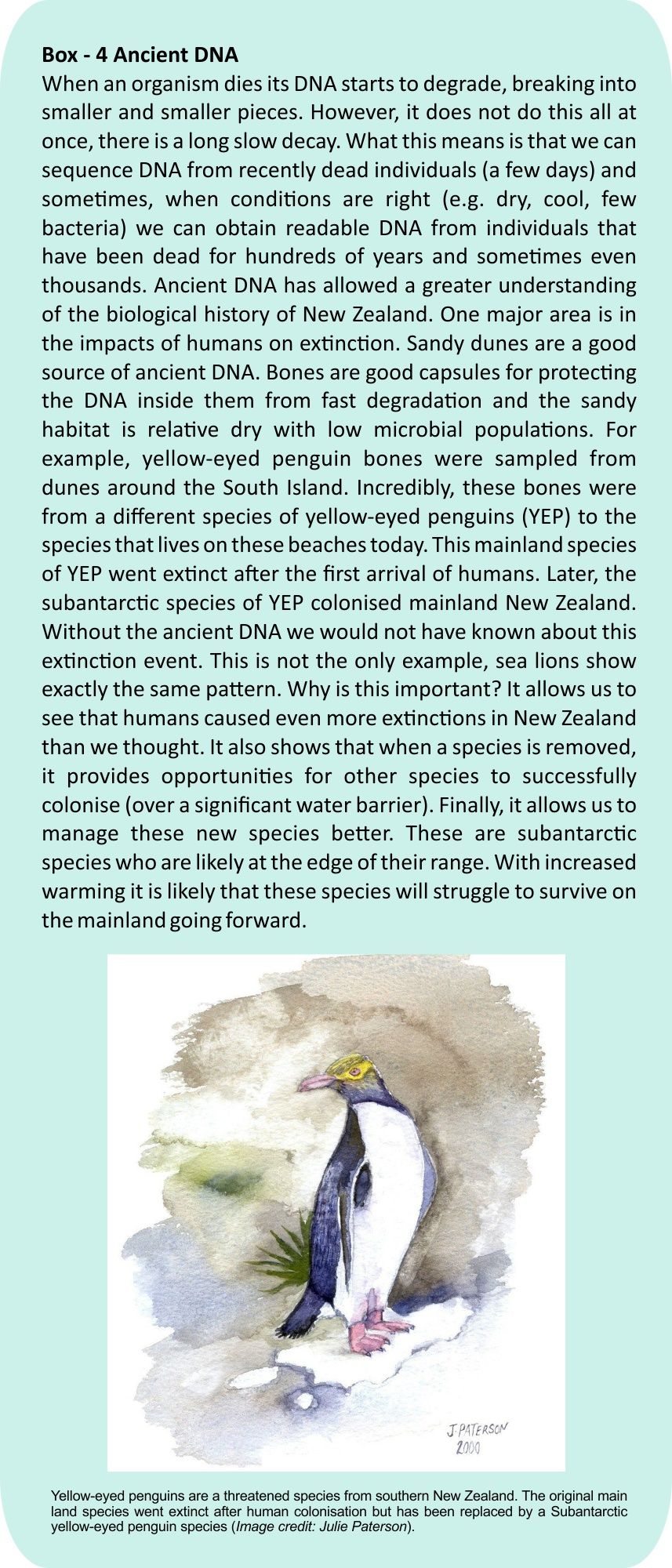
It is always a mistake to think of islands faunas as static, somehow stuck in a lost world mode. There are continuous colonisations and extinctions which ebb and flow through time.
The land that time forgot
The biogeographical history of New Zealand is often thought of in terms of a small, geologically active archipelago, long abandoned in the south-west Pacific, isolated and forgotten. While there is an element of truth to this view, the New Zealand biota is a whole lot more complicated. When we consider the species found in this lost world, we see some that are ancient heirlooms from Gondwanaland, including the tuatara, the weta, or the leiopelmatid frogs. Other species colonised or arose in Zealandia and then survived the Oligocene Drowning, such as the moa. A larger group of species are souvenirs of the last 20 million years, collecting together species that successfully found the lost world, colonised and made it their home. Finally, there are many species that came with the assistance of recent human colonisation. New Zealand may be a lost world, but it is one that has been repeatedly found.
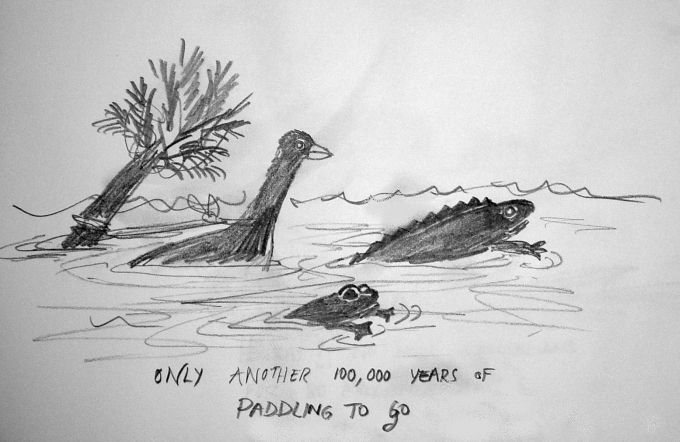
Want to know more?
- McCulloch GA and Waters JM (2019) Phylogenetic divergence of island biotas: Molecular dates, extinction, and “relict” lineages. Molecular Ecology 28: 4354–4362.
- Gibbs G (2016) Ghosts of Gondwana: The history of life in New Zealand (Fully revised edition) potton & burton
- Trewick SA and Bland KJ (2012) Fire and slice: palaeogeography for biogeography at New Zealand's North Island/South Island juncture. Journal of the Royal Society of New Zealand 42: 153-183.
- Goldberg J, Trewick SA, and Paterson AM (2008) Evolution of New Zealand’s terrestrial fauna: a review of molecular evidence. Philosophical Transactions of the Royal Society B 363: 3319-3334.
 Zoology
Zoology
Responses